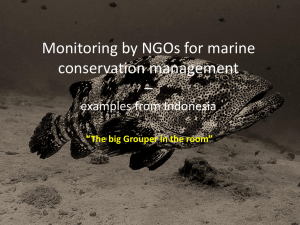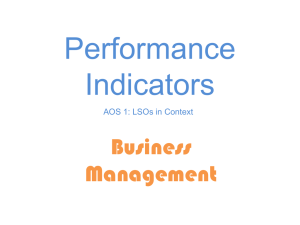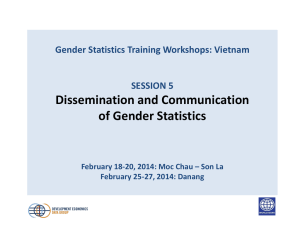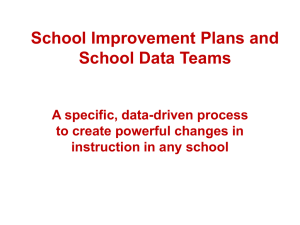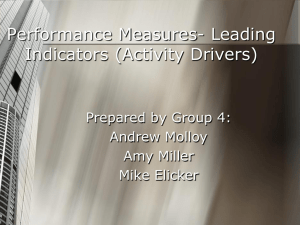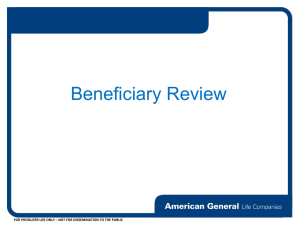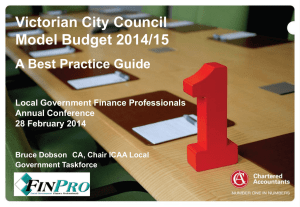NID_Dublin_-_prepare_a_proposal_by_Ingrid_Kellerx
advertisement
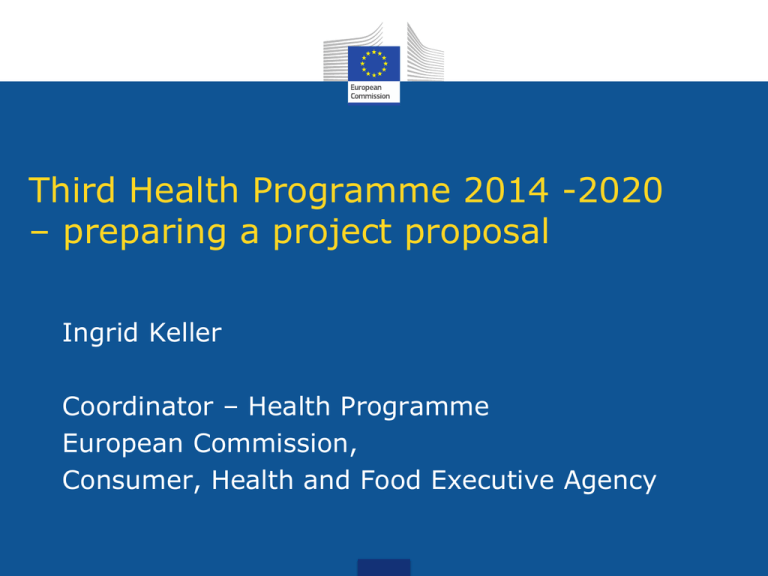
Third Health Programme 2014 -2020 – preparing a project proposal Ingrid Keller Coordinator – Health Programme European Commission, Consumer, Health and Food Executive Agency Proposals received 2008-2013 2008 2009 2010 2011 2012 2013 Total 154 183 115 38 87 67 644 Conferences 43 45 27 35 42 47 239 Operating Grants 26 26 25 35 46 45 203 2 4 10 5 5 5 31 225 258 177 113 180 164 1117 Instruments Projects Joint Actions Total Irish participation in 2HP – type of actions co-funded 2% 9% 5% Projects 47% Joint actions Conferences Operating grants Tender 37% Irish participation in 2HP – organisations and partner co-funded Organisation type Type of partners Academic organisation 7% 13% 4% Commercial organisation 22% Governmental organisation 36% 40% Non profit organisation excluding the above Non-governmental organisation Associated Main 78% Irish participation in 2HP – average evaluation grade Projects Country EU-28+EFTA 62.29 25.57 23.56 EV Crit A Total 18.71 16.80 EV Crit B Total 18.00 58.26 17.89 EV Crit C Total EV Overallmarks Participation 2HP Projects MP 180 160 140 120 100 80 60 40 20 0 AT BE BG CY CZ DE DK EE ES FI FR GR HR HU IC Submitted IR IT Funded LT LU LV MT NL NO PL PT RO SE SI SK UK General principles EC funding Applicable to all financing mechanisms 1. Co-funding rule: external co-financing from a source other than EC funds is required (own resources or financial contributions from third parties) 2. Non-profit rule: the grant may not have the purpose or effect of producing a profit for the beneficiary (total Expenses = total incomes) 1. Non-retroactivity rule: only costs incurred after the starting date defined in the grant agreement can be cofunded 2. Non-cumulative rule: only one grant can be awarded for a specific action carried out by a given beneficiary Page 7 Eligibility criteria • Applicants must be legally established. • Only applicants from the 28 EU Member States plus Norway and Iceland can apply. • A project proposal must be submitted by at least 3 different legal entities from 3 different eligible countries. • The only eligible activities are those listed in section 2.1 "Grants for projects" in the work programme 2014. • The co-funding is meant for a future project. Running projects cannot be supported. Exclusion criteria • Exclusion from participation: • being bankrupt, • convicted of an offence concerning professional conduct, • guilty of grave professional misconduct • not in compliance with their obligations relating to the payment of taxes • Exclusion from granting procedure: • conflict of interest • guilty of misrepresenting the information required by the Agency Selection criteria • Financial viability • Not if < 100 000€ EU co-funding or if public • If > 750 000€ -> attach audit report • Self-check must be performed If the self-check result is "weak" do not be discouraged from applying! • Operational capacity • Self-declaration • Provide information on capacity Award criteria - I 1 – policy relevance 2 – technical quality 3 – management quality 4 – budget adequacy TOTAL Maximum points Threshold 10 8 Threshold in % of max. points 80% 10 6 60% 10 6 60% 10 6 60% 40 26 Award criterion 1 - Policy and contextual relevance • Sub-criteria: • Relevance of the contribution to meeting the objectives and priorities defined in the annual work plan of the 3rd Health Programme, under which the call for proposals is published, • Added value at EU level in the field of public health, • Pertinence of the geographical coverage of the proposals is high, • Consideration of the social, cultural and political context. Award criterion 2 - Technical quality • Sub-criteria: • Quality of the evidence base, • Quality of the content, • Innovative nature, technical complementarity and avoidance of duplication of other existing actions at EU level, • Quality of the evaluation strategy, • Quality of the dissemination strategy and plan. Award criterion 3 - Management quality • Sub-criteria: • Quality of the planning and appropriate task distribution to implement the project, • Relevance of the organisational arrangements, including financial management, • Quality of the partnership. Award criterion 4 – Overall and detailed budget • Sub-criteria: • Relevance and appropriateness of the budget, • Consistency of the estimated cost per applicant and the corresponding activities,, • Realistic estimation of person months per work package • The budget allocated for evaluation and dissemination is reasonable. Types of participants • Project coordinator • Other beneficiaries applicants • Affilited entities Several entities form one for the purpose of the action Legal and/or financial link to another beneficiary Must comply with eligibility criteria • Subcontractors • Do not sign grant agreement • Get 100% of the cost reimbursed • Collaborating stakeholders Page 16 • Do not sign the grant agreement • Cost not eligible CONTENT PREPARATION NEW – electronic submission system • Part A • administrative "form": title, keywords, abstract, partners, overview budget (60/80% ?), checklist with criteria • Part B • free-flow text, according to template (PDF) • You need to write your own proposals • Template gives the mandatory structure Evidence base and problem analysis • Analysis of the health problem and its impact on society/quality of life - incidence, prevalence, distribution, development over time • Analysis of the factors underlying the problem (determinants) • Effectiveness of proposed measures, applicability in the proposed context Defining the objectives • General objective – relate to purpose and vision and is set as the main single aim. • Specific objectives are the concrete activities you carry out to achieve your general objective. • Often active verbs e.g. assess needs, revise, assemble, compare, investigate or develop. Make the objectives S.M.A.R.T • Specific - Specify the target group and the factors that need to be changed • Measurable - Formulate objectives in a measurable format e.g. numbers to be reached, increased awareness by 25 %... • Appropriate - Make sure objectives are achievable and attainable, acceptable for the target group? • Realistic - Ensure that you can realistically achieve the objectives given the project’s resources: time, money, staff? Time-bound - Connect objectives to a time line. State when you will achieve the objective e.g. within 3 months, by February 2015? Indicators • Are the base for the evaluation - need to measure the performance of the project • Should be directly linked to the specific objectives, for each specific objective, one or more indicators can be defined • Should be separated into: • Process indicators • Outcome/output indicators for effect evaluation the level to which the objective is reached • -> per specific objective Formulation of an indicator Step Example Basic indicator Peer educators trained Quantity Number of peer educators trained Quality Number of peer educators trained in counselling that passed the test Time Number of peer educators trained in counselling that passed the test in 2015 Target Increase from x to y in the number of peer educators trained in counselling that passed the test in 2015 (Horstman, 2002) Types of indicators • Process indicators • Are related to the outputs of the project (deliverables, structures created, materials produced/published) • e.g. 120 condom distribution points have been created in night life venues in the city before the end of 2015 • Impact/outcome indicators • Measure broader results achieved by project activities and outputs • e.g. Contraceptive use by the target group has increased from 30 to 40% over the last twelve months Methods and means - The activities of the project needs to be described - Every specific objective should be achieved by aplying a method/ using means - Methods need to be scientifically validated & match the staff expertise - Answer the question: Why are these the most effective methods to achieve your objectives? Target group • Identify the groups who will be involved in and benefit from the project. • Be specific, try to find a segment of people who are as homogenous as possible e.g. girls / aged 11-15 /in school settings • Ensure that the planned methods for the interventions are relevant for this particular group Policy and contextual relevance • Contribution to the third health programme and the annual work plan, other EU policies e.g. Communication on HIV/AIDS • Strategic relevance, EU added value and innovation • Pertinence of the geographical coverage • Adequacy of the project with social, cultural, policy context 7 ways to create EU-added value • 1. Implementing EU legislation • Objective: ensuring that legislation is implemented correctly • Example: JA on Facilitating collaboration on organ donation between national authorities in the EU • 2. Economies of scale • demonstrate ‘return on investment’ for MS & ensure sustainability • Objective: To save money, and to provide better service to citizens • Target: No duplication of efforts • Example: JA on Forecasting health workforce needs for effective planning in the EU 7 ways to create EU-added value • 3. Promotion of best practice • Objective: Citizens benefit from state of the art best practice, capacity building where necessary • Target: ‘best practice’ applied in all participating MS • Example: JA on Mental Health and well-being • 4. Benchmarking for decision making • • • • Focus on indicators with real impact on decision making. Objective: To facilitate evidence based decision making Target: Real time data comparison available Example: JA on Improvement of HIV prevention in Europe 7 ways to create EU-added value • 5. Cross border threats • Objective: To reduce risks and mitigate consequences of health threats • Target: Depending on individual threats • Example: JA on the impact on maritime transport of health theats 7 ways to create EU-added value • 6. Movement of persons • Patients crossing borders, migration issues and Brain drain - movement of workers across Europe • High ‘EU legitimacy’. Ensure high quality Public Health across EU MS. Added value depends on the scale of the problem • Example: JA on Forecasting health workforce needs for effective planning in the EU 7 ways to create EU-added value • 7. Networking • Very difficult to put into objectives, targets, and indicators. • Is a ‘side effect’ of other actions • Is the rationale of the funding of ‘networks’ • Is very important for dissemination of the results to all MS including non-participants Managing the project implementation • An evidence based problem analysis that takes into account • Policy and contextual relevance leads to defining the general objective of the project. • This is translated into several specific, s.m.a.r.t objectives. • Link target groups, methods and means to each objective and expected outcomes and indicators of these. Group activities in work packages with defined deliverables. Work packages - horizontal tasks: coordination, dissemination and evaluation (mandatory) - vertical tasks: actions fulfilling the objectives (max 6) WP 1 – coordination of the project: Specifications, Description of work, List of deliverables, Milestones Horizontal WP:s WP 2 – dissemination of results WP 3 – evaluation of the project Core WP:s WP 4 WP 5 WP 6 WP 7 • Description of work •deliverables • Milestones Timetable specification 36 months Project example Steering Committee WP 1: Coordination WP 2: Dissemination WP 3: Evaluation WP 4 WP 5: WP 6: Improvement of existing Instruments Urban Environment, Transport related physical activity Healthrelated fitness 4.1 Q Core Development 4.2 Q Workplace Module 5.1 Environmental Determinants 4.3 Accelerometry 5.2 Active Transportation 6.1 Fitness Test for adults 4.4 Assessment of PA in Children 5.3 GIS Data Analysis 6.2 Fitness Test for children By D. Meusel 35 Timetable • Applicants can use format they prefer • Suggestion: GANTT chart ANY QUESTIONS ON CONTENT? Budget Eligible costs Connected with the subject of the GA and included in the Technical annex and in the budget description Necessary for the performance of the action Reasonable and justified “good housekeeping” Generated during the lifetime of the action Actually incurred by the beneficiaries (including affiliated entities), using applicable accounting principles Identifiable and verifiable, in particular being recorded in the accounting records of beneficiary Cost Categories Direct Costs 1. Personnel cost 2. Subcontracting costs 3. Travel Costs and subsistence allowances 4. Equipment 5. Other goods and services Indirect Costs 6. Overheads – flat rate of 7% of total direct costs Non-Eligible costs • Return on capital • Debt and debt services charges • Provision for losses or potential future liabilities • Interest owed, doubtful debts • Exchange losses • VAT – depends – watch new grant agreement! • Cost declared by a beneficiary and covered by another action funded by a EC grant • Contribution in kind 5 Sources of income • • • • Page 42 Co-funding request from the EU budget Applicant financial contribution Income generated by the action Other External resources ANY QUESTIONS ON THE BUDGET? Tips • Plan for each Work Package separately • Identify: • Activities necessary to achieve objectives • Cost elements (and cost category) of each activity • Partners participating in a given activity • For simplicity use EC rules • EUR 500 per roundtrip flight + EC rules on subsistence • Depreciation rules for equipment (straight line, 36 months for software / computers and 60 months for other items) Tips cont. • Confusion of Staff & Subcontracting • Consult HR department • Partnership / Consortium Agreement • Signed by each partner • Internal project management • Roles and responsibilities of partners • “Project management” minded staff at main partner and WP leaders, Financial manager at main partner • Read the grant agreement • Send documents in time! Delay of 1 partner delays the whole action Page 45 External experts for evaluation http://ec.europa.eu/eahc/ami/ Thank you! Ingrid Keller Dipl.oec.troph., MPH, MSc, CAPM Coordinator – Health Programme European Commission Consumer, Health and Food Executive Agency Health Unit ingrid.keller@ec.europa.eu http://ec.europa.eu/chafea/
